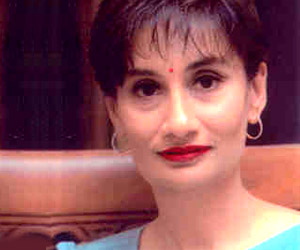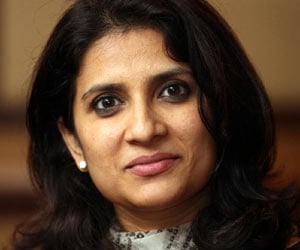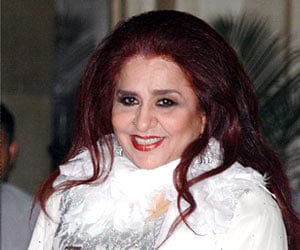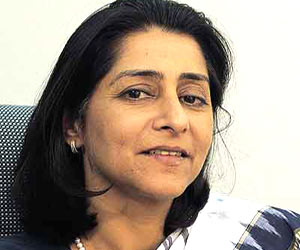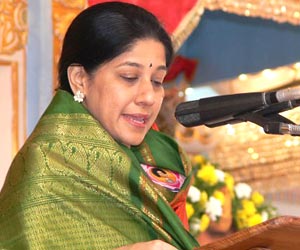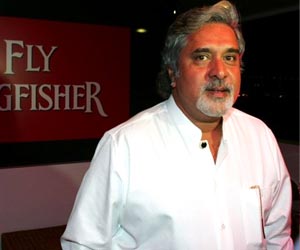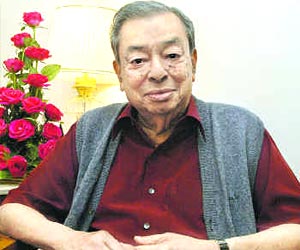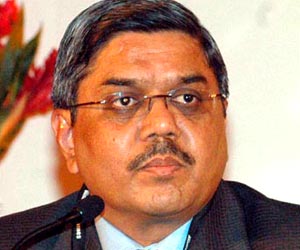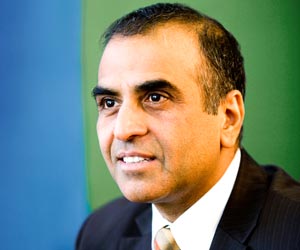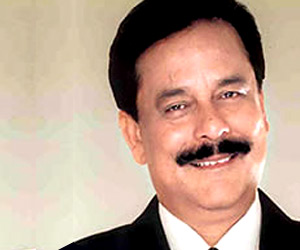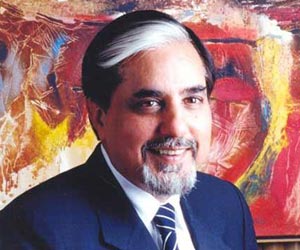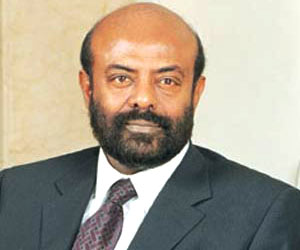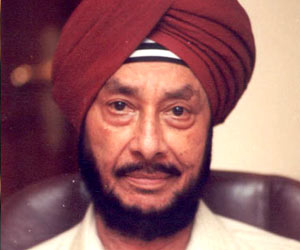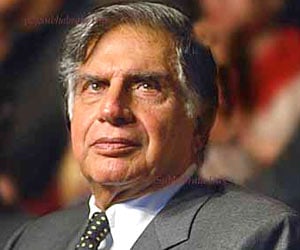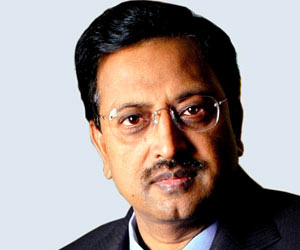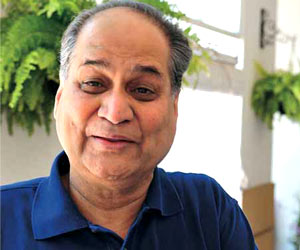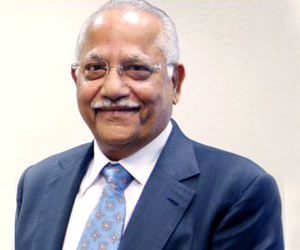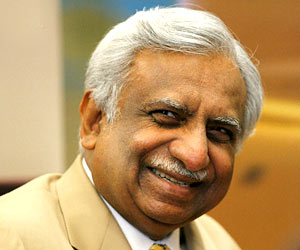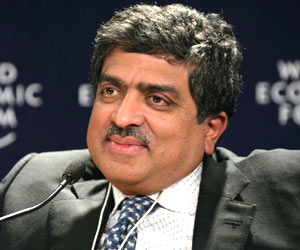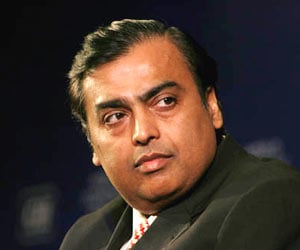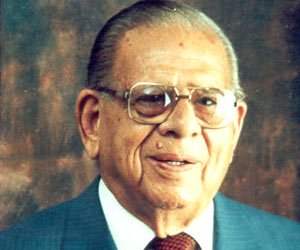Born On: June 9, 1899
Born In: Mulki, Karnataka
Died On: June 30, 1967
Career: Journalist, Social Leader, Industrialist
Nationality: Indian
Known for establishing one of the oldest and commercial banks in India, Vaman Srinivas Kudva was one of the founding directors of Syndicate Bank, launched as Canara Industrial and Banking Syndicate Limited. With just a capital of Rs. 8000, Kudva, along with other founders Upendra Ananth Pai and T.M.A. Pai, extended the business to over 20 banks within few years of its establishment. With the change of its name to Syndicate Bank in 1964, the company expanded its business to all over India and overseas as well. Apart from the establishment of this commercial bank, Kudva had been involved in several other social activities through setting up industries for the common man as a source of living. Kudva is popularly known as "Karmayogi" by the people of Mangalore and Dakshina Kannada, who remember him for his unexceptional endeavors and extreme hardships faced throughout life.
Early Life
Vaman Srinivas Kudva, or V.S. Kudva for short, was born in the panchayat town of Mulki in Dakshina Kannada district of Indian state of Karnataka. His was a conservative and traditional Gowda Saraswath Brahmin (GSB) family that was known as the Mulky Kudvas in his hometown. He was brought up in a simple environment with primary education at Mulky and high school education at Udupi. His father Srinivas Ramachandra Kudva ran a small handloom unit in Mulky and began a hardware shop on relocating to Udupi in 1908. Kudva completed his intermediate studies from Government College, Mangalore in 1918 and went to Bombay to pursue a course in mechanical engineering from Victoria Jubilee Technical Institute (VJTI). Despite being a topper for three continuous years, he gave up his studies as a mode of support to Gandhiji's Non-Cooperation Movement. As such, he traveled back to Udupi in 1921 and volunteered as a teacher in a national school started by Congress Party.
Career as an Industrialist
Kudva began an engineering workshop in Udupi between 1922 and 1926, following which he went to Mangalore in 1926. On being invited by V.S. Kamath, the then Managing Director of The Canara Public Conveyance Co. Ltd. (CPC Co. Ltd.), Kudva joined the company as works manager. On Kamath's death in 1932, Kudva became the General Manager of the company. Later in 1938, he was selected as Managing Director which he held until 1966. It was during his tenure that the company reached extensive growth and success, thereby generating heavy revenues and earning name and fame across the nation. During this period, Kudva realized that Indian required more industries to create employment. With this, he established The Canara Sales Corporation Ltd. in 1938, followed by The Canara Motor & General Insurance Co. Ltd. in 1941. This was not all as Kudva founded The Canara Workshops Ltd. in 1943 through which he started manufacturing automobile leaf springs in 1950. The leaf springs were branded under the name Canara Springs. Kudva set up another factory in Nagpur to meet with the increasing demands in North India. However, this unit was shut down in the 1960s due to undisclosed problems faced by the company. To produce the leaf springs, raw materials were imported. As such, Kudva thought about starting a mini steel plant to manufacture the desired spring steel in the country itself. Therefore, a mini steel plant was materialized that constituted of 5 metric tonne electric arc furnace, vertical continuous casting machine, and rolling mill. To add on, Kudva began The Canara Tyre & Rubber Works Ltd. in 1947, followed by several other transport concerns over the years.
Career as a Journalist
Kudva was very keen into journalism since his student days. This proved right when he started editing the Kannada Weekly "Sathyagrahi" in 1922. Later in 1923, he took up the job of an editor in Kannada Weekly "Swadeshabhimani" which he continued till 1924. Apart from being associated with various industries, Kudva set up The Newspaper Publishers Pvt. Ltd. in 1941 which started the publication of Kannada daily newspaper "Navabharath". While serving as an editor, he gained high recognition and respect from Kannada journalists that later resulted in the Akhila Karnataka Journalist conference in Mangalore.
Career as a Social Leader
Kudva founded the Canara Industrial and Banking Syndicate Ltd. (now called Syndicate Bank) in 1925, along with T.M.A. Pai and Upendra Ananth Pai in Mangalore (now Udupi). It is deemed to be one of the oldest and major commercial banks of India which was nationalized on July 19, 1969 by the Government of India. He was selected as the President of Kanara Chamber of Commerce and Industries in 1948, which he continued for the next three years. He was one of the major supporters for bringing the weather port and airport to Mangalore, along with his good friend U. Srinivas Mallya. Further in 1955, he established the Canara Foundation for employing loan scholarships to students for continuing their higher technical education in foreign countries. Yet again in 1960, he joined hands with U. Srinivas Mallya and set up the Karnataka Regional Engineering College, now known as National Institute of Technology, Karnataka (NITK), at Suratkal.
Establishment of Rotary Club
Kudva brought the first Rotary Club to Mangalore for which he held the position of Charter President for quite some time. He then became and held the post of the President of several other companies and social organizations, namely, S.K. Development and Welfare Board, Small Scale Industries Association, and S.K. Village Industries Association. During his lifetime, Kudva made numerous trips across India and abroad, particularly during a time when traveling to foreign lands was difficult and unusual. In 1951, he went to the Middle East, Europe, and United States. Later in 1960 and 1963, he traveled yet again to Europe, United States, and Japan.
Personal Life
Kudva married Shantha, daughter of V.S. Kamath, in 1928. The couple had five sons and one daughter.
Death
Vaman Srinivas Kudva passed away on June 30, 1967 at the age of 68 years.
Timeline
1899: Was born on June 9 in Mulki, Dakshina Kannada, Karnataka
1918: Completed schooling from Government College, Mangalore
1918: Took admission in Victoria Jubilee Technical Institute (VJTI), Bombay
1921: Quit studies and went back to Udupi to support Non-Cooperation Movement
1922: Started editing the Kannada Weekly "Sathyagrahi"
1923: Turned editor in Kannada Weekly "Swadeshabhimani"
1925: Co-founded the Canara Industrial and Banking Syndicate Limited
1926: Went to Mangalore and joined as works manager in CPC Co. Ltd.
1928: Married Shantha
1932: Became General Manager of CPC Co. Ltd.
1938: Turned Managing Director and held the position till 1966
1938: The Canara Sales Corporation Ltd. was set up
1941: Established The Newspaper Publishers Pvt. Ltd.
1941: The Canara Motor & General Insurance Co. Ltd. was launched
1943: Founded The Canara Workshops Ltd.
1947: Launched The Canara Tyre & Rubber Works Ltd.
1948: Elected as President of Kanara Chamber of Commerce and Industries
1950: Began manufacturing of automobile leaf springs under the brand Canara Springs
1955: Founded the Canara Foundation
1960: Established Karnataka Regional Engineering College at Suratkal
1964: Canara Industrial and Banking Syndicate Limited changed to Syndicate Bank
1967: Died on June 30 in Mangalore, aged 68
1969: Syndicate Bank was nationalized on July 19
Born In: Mulki, Karnataka
Died On: June 30, 1967
Career: Journalist, Social Leader, Industrialist
Nationality: Indian
Known for establishing one of the oldest and commercial banks in India, Vaman Srinivas Kudva was one of the founding directors of Syndicate Bank, launched as Canara Industrial and Banking Syndicate Limited. With just a capital of Rs. 8000, Kudva, along with other founders Upendra Ananth Pai and T.M.A. Pai, extended the business to over 20 banks within few years of its establishment. With the change of its name to Syndicate Bank in 1964, the company expanded its business to all over India and overseas as well. Apart from the establishment of this commercial bank, Kudva had been involved in several other social activities through setting up industries for the common man as a source of living. Kudva is popularly known as "Karmayogi" by the people of Mangalore and Dakshina Kannada, who remember him for his unexceptional endeavors and extreme hardships faced throughout life.
Early Life
Vaman Srinivas Kudva, or V.S. Kudva for short, was born in the panchayat town of Mulki in Dakshina Kannada district of Indian state of Karnataka. His was a conservative and traditional Gowda Saraswath Brahmin (GSB) family that was known as the Mulky Kudvas in his hometown. He was brought up in a simple environment with primary education at Mulky and high school education at Udupi. His father Srinivas Ramachandra Kudva ran a small handloom unit in Mulky and began a hardware shop on relocating to Udupi in 1908. Kudva completed his intermediate studies from Government College, Mangalore in 1918 and went to Bombay to pursue a course in mechanical engineering from Victoria Jubilee Technical Institute (VJTI). Despite being a topper for three continuous years, he gave up his studies as a mode of support to Gandhiji's Non-Cooperation Movement. As such, he traveled back to Udupi in 1921 and volunteered as a teacher in a national school started by Congress Party.
Career as an Industrialist
Kudva began an engineering workshop in Udupi between 1922 and 1926, following which he went to Mangalore in 1926. On being invited by V.S. Kamath, the then Managing Director of The Canara Public Conveyance Co. Ltd. (CPC Co. Ltd.), Kudva joined the company as works manager. On Kamath's death in 1932, Kudva became the General Manager of the company. Later in 1938, he was selected as Managing Director which he held until 1966. It was during his tenure that the company reached extensive growth and success, thereby generating heavy revenues and earning name and fame across the nation. During this period, Kudva realized that Indian required more industries to create employment. With this, he established The Canara Sales Corporation Ltd. in 1938, followed by The Canara Motor & General Insurance Co. Ltd. in 1941. This was not all as Kudva founded The Canara Workshops Ltd. in 1943 through which he started manufacturing automobile leaf springs in 1950. The leaf springs were branded under the name Canara Springs. Kudva set up another factory in Nagpur to meet with the increasing demands in North India. However, this unit was shut down in the 1960s due to undisclosed problems faced by the company. To produce the leaf springs, raw materials were imported. As such, Kudva thought about starting a mini steel plant to manufacture the desired spring steel in the country itself. Therefore, a mini steel plant was materialized that constituted of 5 metric tonne electric arc furnace, vertical continuous casting machine, and rolling mill. To add on, Kudva began The Canara Tyre & Rubber Works Ltd. in 1947, followed by several other transport concerns over the years.
Career as a Journalist
Kudva was very keen into journalism since his student days. This proved right when he started editing the Kannada Weekly "Sathyagrahi" in 1922. Later in 1923, he took up the job of an editor in Kannada Weekly "Swadeshabhimani" which he continued till 1924. Apart from being associated with various industries, Kudva set up The Newspaper Publishers Pvt. Ltd. in 1941 which started the publication of Kannada daily newspaper "Navabharath". While serving as an editor, he gained high recognition and respect from Kannada journalists that later resulted in the Akhila Karnataka Journalist conference in Mangalore.
Career as a Social Leader
Kudva founded the Canara Industrial and Banking Syndicate Ltd. (now called Syndicate Bank) in 1925, along with T.M.A. Pai and Upendra Ananth Pai in Mangalore (now Udupi). It is deemed to be one of the oldest and major commercial banks of India which was nationalized on July 19, 1969 by the Government of India. He was selected as the President of Kanara Chamber of Commerce and Industries in 1948, which he continued for the next three years. He was one of the major supporters for bringing the weather port and airport to Mangalore, along with his good friend U. Srinivas Mallya. Further in 1955, he established the Canara Foundation for employing loan scholarships to students for continuing their higher technical education in foreign countries. Yet again in 1960, he joined hands with U. Srinivas Mallya and set up the Karnataka Regional Engineering College, now known as National Institute of Technology, Karnataka (NITK), at Suratkal.
Establishment of Rotary Club
Kudva brought the first Rotary Club to Mangalore for which he held the position of Charter President for quite some time. He then became and held the post of the President of several other companies and social organizations, namely, S.K. Development and Welfare Board, Small Scale Industries Association, and S.K. Village Industries Association. During his lifetime, Kudva made numerous trips across India and abroad, particularly during a time when traveling to foreign lands was difficult and unusual. In 1951, he went to the Middle East, Europe, and United States. Later in 1960 and 1963, he traveled yet again to Europe, United States, and Japan.
Personal Life
Kudva married Shantha, daughter of V.S. Kamath, in 1928. The couple had five sons and one daughter.
Death
Vaman Srinivas Kudva passed away on June 30, 1967 at the age of 68 years.
Timeline
1899: Was born on June 9 in Mulki, Dakshina Kannada, Karnataka
1918: Completed schooling from Government College, Mangalore
1918: Took admission in Victoria Jubilee Technical Institute (VJTI), Bombay
1921: Quit studies and went back to Udupi to support Non-Cooperation Movement
1922: Started editing the Kannada Weekly "Sathyagrahi"
1923: Turned editor in Kannada Weekly "Swadeshabhimani"
1925: Co-founded the Canara Industrial and Banking Syndicate Limited
1926: Went to Mangalore and joined as works manager in CPC Co. Ltd.
1928: Married Shantha
1932: Became General Manager of CPC Co. Ltd.
1938: Turned Managing Director and held the position till 1966
1938: The Canara Sales Corporation Ltd. was set up
1941: Established The Newspaper Publishers Pvt. Ltd.
1941: The Canara Motor & General Insurance Co. Ltd. was launched
1943: Founded The Canara Workshops Ltd.
1947: Launched The Canara Tyre & Rubber Works Ltd.
1948: Elected as President of Kanara Chamber of Commerce and Industries
1950: Began manufacturing of automobile leaf springs under the brand Canara Springs
1955: Founded the Canara Foundation
1960: Established Karnataka Regional Engineering College at Suratkal
1964: Canara Industrial and Banking Syndicate Limited changed to Syndicate Bank
1967: Died on June 30 in Mangalore, aged 68
1969: Syndicate Bank was nationalized on July 19
